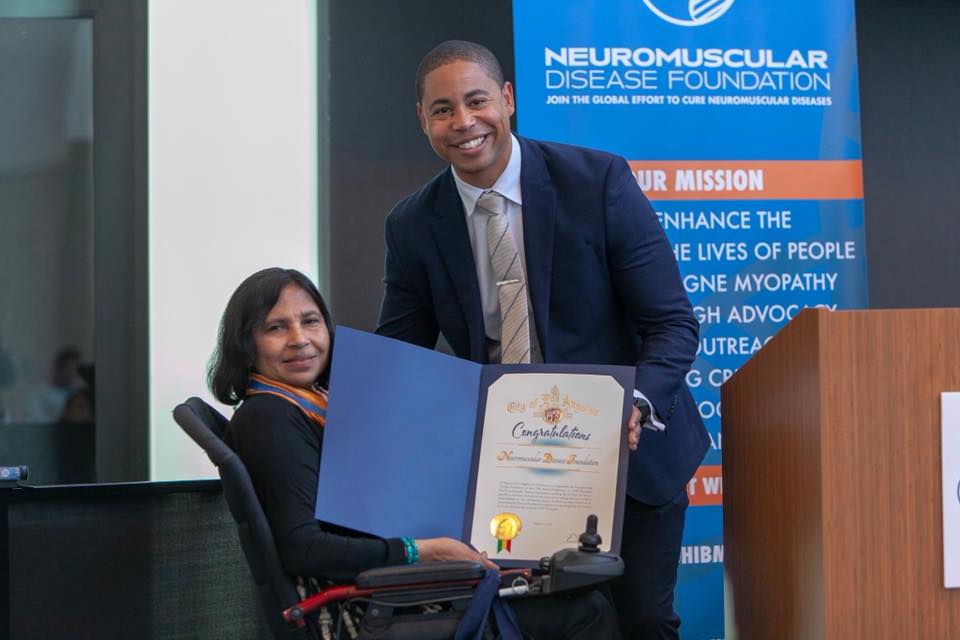Friends,
Kam, is a GNE Myopathy patient who depicts her challenges with this very disabling disease through her unique and very touching illustrations. All of Kam's drawings are inspired from her actual life including the progression of this extremely rare and debilitating muscle disease that took over her body at age 21. She went from kicking soccer balls and running to making use of canes, leg braces and now a wheelchair. This disease will keep going until it seizes every ounce of her body.
Recently, one of her illustrations was selected by Rare Artist, a division of Everylife Foundation to be displayed during Rare Disease Caucus Week (Feb. 29-Mar. 3) on Capitol Hill in Washington, D.C.
My name is Kam Redlawsk and I am 14 years into this disease known as HIBM (GNE Myopathy). I am an Industrial Designer and an Illustrator. Five years ago I began using art to draw moments of everyday struggles and triumphs of HIBM. It was an attempt to expand my awareness advocacy for HIBM and to invite people to observe a small window of the intimate moments of living with such a rare and ultimately extremely debilitating condition.
'I Don't Want to Be an Inspiration Today' is an illustration of a particular day, of a particular moment. One day when I was home alone I fell, like I so often used to do when I was still walking. My only option was to lay on the floor while I waited for help, and as I laid there feeling utterly alone I noticed the sun as it projected the shadow of the window upon me. At this time I was still walking - utilizing leg braces and a cane to assist my weakening and wobbly legs. And, in that moment, and moments like it, I felt the intimate and most personal expression that most people outside my helping circle never see. I see a lot of disabled public speaker's speak on how to be positive, how to keep going, which I think is very important, but rarely do I see them show the true side of what it is like living with a life altering disability and/or struggle. And I understand why, because it really is difficult to share your weaknesses. But I think this glazes over what disability is truly like and for outsiders it's a shallow perception of what “being strong” means.
With all the advocacy work I used to do, more in the past then today, I would have genuine moments of frustration in being the “positive” figure and despite trying to move ahead and spread awareness what I was really thinking was, “I don't want to be an inspiration today, I just don't have it in me to make sure everyone else is ok with my disability”. I didn't want to be the one showing all this vulnerability so people could tell me what an inspiration I was, even though logically I understand why people say that. Because I say the same to others. But the times when people told me what an inspiration I was and then walk away and forget my disease and cause, I felt frustrated and alone. If people only saw the depths of the struggle in every single day, every single second, every single moment then they would have a broader understanding and empathy towards such a rare disease and try to help conquer it. I don't want to be an inspiration, I only want to get rid of this condition.
When I drew this I was struggling to continue walking and doing my best to not to succumb to the inevitable wheelchair in hopes that I would still be walking when human trials would come around. I never made it. I eventually gave into a wheelchair right before trials began. Today my legs are not only near paraplegic but HIBM has begun its work on my upper extremities. My arms, shoulders, fingers, hands and neck will fall to the same plight my legs have if treatment does not come soon.


